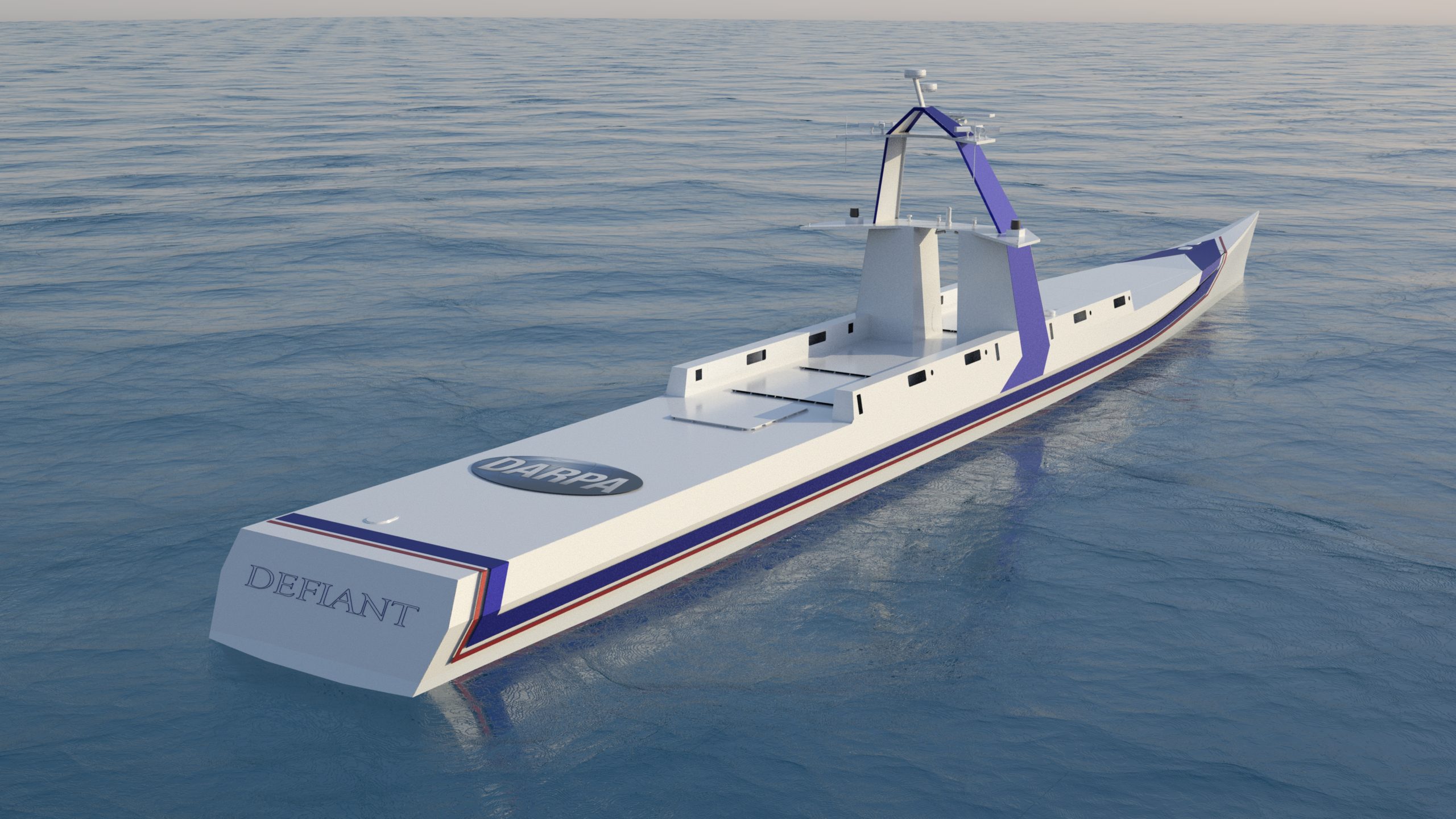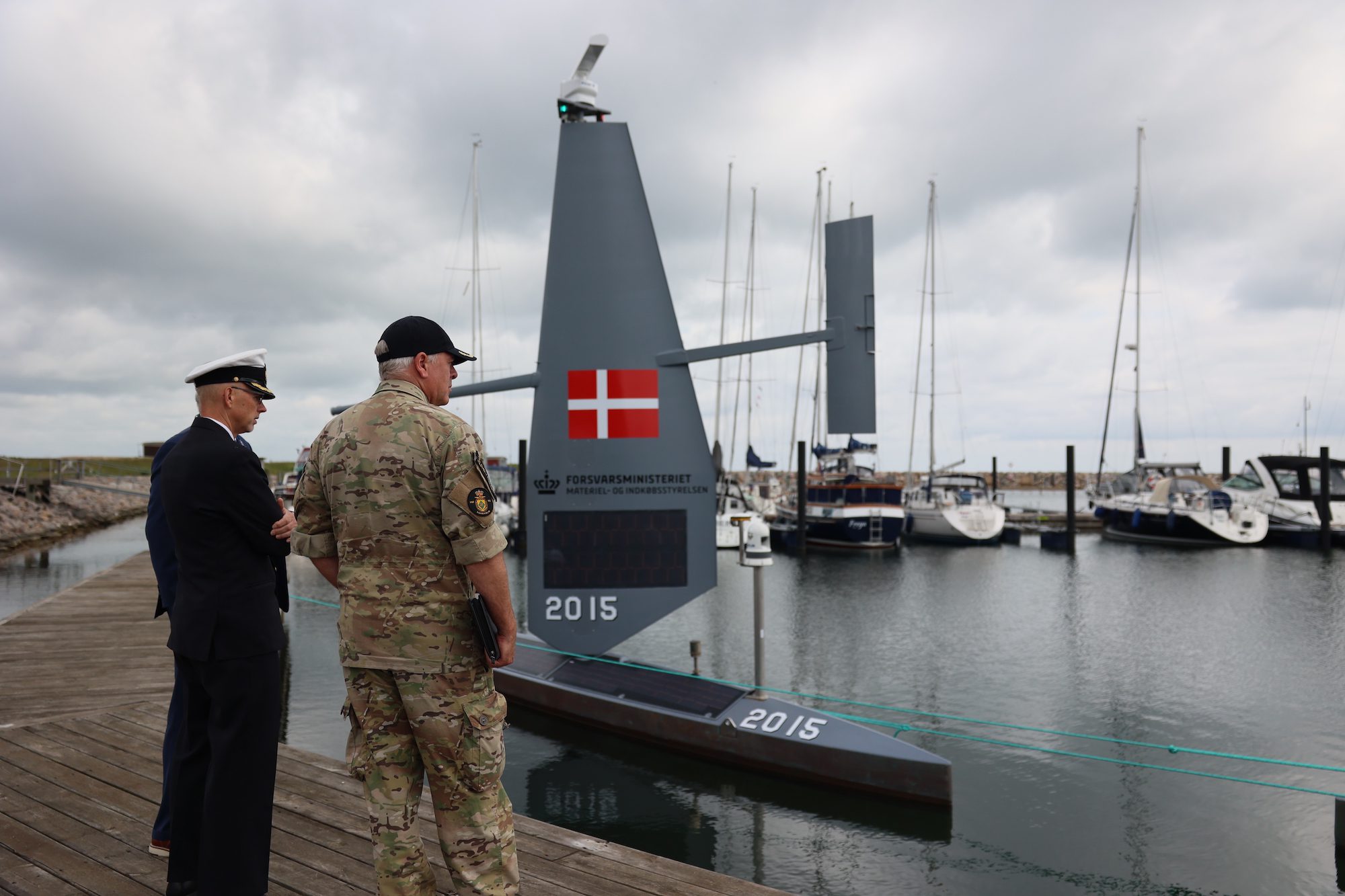The U.S. Department of Defense is moving to the next phase of its unmanned ship program, which will involve finalizing the design and moving to construction before a series of at sea tests.
The Defense Advanced Research Projects Agency (DARPA), the DoD agency responsible for researching and developing new and emerging technologies that could be of use by the U.S. military, said Tuesday the No Manning Required Ship program, aka NOMARS, had completed Phase 1 of the program and will now be moving to Phase 2.
In Phase 1, Serco, which is the agency selected towards the conclusion of Phase 1, developed a new design toolset to evaluate ship designs that met the requirement that there will never be a human on board the vessel while it is at sea – including during underway replenishment (UNREP) events. This means the project required taking clean-sheet approach to design, considering there will never by any crew on board to perform maintenance, and new approaches for power generation, propulsion, machinery line-up, and control schemes to ensure functionality throughout long missions in all weather, temperature, and sea states.
In Phase 2, Serco will finalize ship design, build the ship, and work through a series of rigorous testing activities before taking it to sea for a three-month demonstration event.
Defiant Unmanned Ship
In designing the vessel, Serco developed a new Design Space Exploration (DSX) program that uses a variaty parameters to then output millions of ship designs meeting certain performance objectives and constraints. The program created a set of ship designs ranging from 170-270 metric tons, then refined those into a single ship for the preliminary design review, which the company dubbed Defiant.
Defiant will no doubt be the first of its kind. The 210-metric ton MUSV-class vessel is designed to carry a significant payload and push the limits in terms of maintenance reliability, performance and availability. The goal is to achieve “ultra-reliability” objectives by integrating distributed hybrid power generation, podded propulsors, and high-capacity batteries. Because there will be no crew, the key philosophy of the program is “graceful degradation,” meaning individual equipment is designed to fail over time and still have enough system-level redundancy to meet full system requirements at speeds of at least 15 knots after one year at sea.
The major system components of the design are modularized, so repairs can be conducted with equipment typically found in yacht-yards worldwide. This maintenance philosophy supports rapid turnaround, allowing the ships to spend a majority of their lifetime at sea performing missions, DARPA says.
In Phase 2, Serco will finalize ship design, build the ship, and work through a series of rigorous testing activities before taking it to sea for a three-month demonstration.
“NOMARS plans to demonstrate a next-generation completely unmanned ship that will enable entirely new concepts of operations,” said Gregory Avicola, program manager in DARPA’s Tactical Technology Office. “We will enable methods of deploying and maintaining very large fleets of unmanned surface vessels that can serve as partners, across the globe, for the larger crewed combatants of the U.S. Navy.”
Sign up for our newsletter

 Join The Club
Join The Club











